BEZIER CURVE
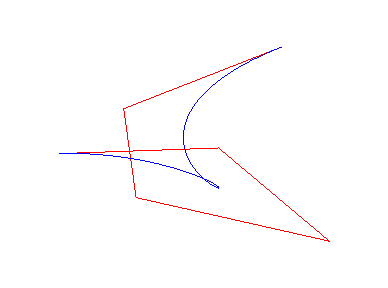
| next curve | previous curve | 2D curves | 3D curves | surfaces | fractals | polyhedra |
BEZIER CURVE

| Curve studied by Pierre Bezier in 1956 and, independently,
by Paul de Casteljau in 1958.
Pierre Bezier (1910 - 1999): engineer for Régie Renault. See Centrale PC 99 exam paper. |
| Affine parametrization: Polynomial algebraic curve of degree £ n. Curvature at A0 : |
Given a broken line
(called control polygon, (Ak) being the control points),
the associated (polynomial) Bezier curve is the curve with the aforementioned
parametrization ; the curve passing through A0
(for t = 0) and An (for
t
=
1) and has its portion joining these points traced in the convex envelope
of the control points ; the tangent at A0
is
(A0A1)
and the one at An is (An-1An).
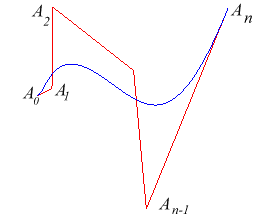
Recursive construction (algorithm invented by Casteljau,
engineer for Citroën):
The point
is the barycentre of
and
where
are the current points respectively on the Bezier curves whose control
polygons are
and
;
moreover, the line
is tangent in
to the Bezier curve.
Conversely, every polynomial algebraic curve is a Bezier curve with a one-to-one correspondence with the control polygon, once its extremities are chosen arbitrarily on the curve.
Here is an example of a closed Bezier curve and its control curve in red:
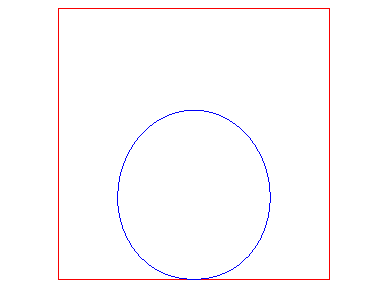
Is it a circle?
No! Since there are 6 control points (with A0 = A5), it is a quintic ; here is an (almost) complete flattened representation:
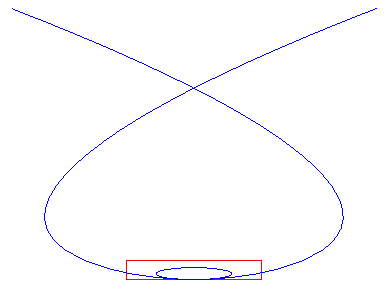
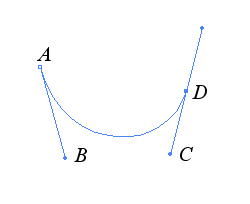 |
Bezier curves are used in drawing software such as Illustrator, with the tool "pen tool"; on the left, the cubic Bezier curve with ABCD as control polygon was traced using this tool. |
Bezier curves are examples of spline
curves and can be generalized into rational
Bezier curves.
See also Lagrange
curves, 3D Bezier
curves, Bezier surfaces.
Also look at:
demonstrations.wolfram.com/SimpleSplineCurves
| next curve | previous curve | 2D curves | 3D curves | surfaces | fractals | polyhedra |
© Robert FERRÉOL
2017